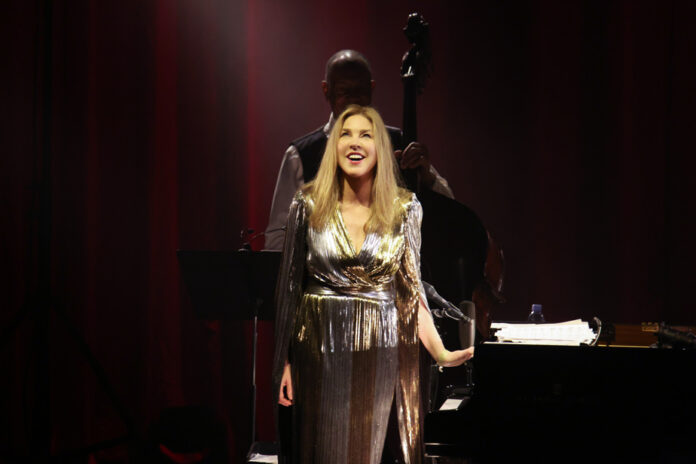Diana Krall offered the first of two concerts she is presenting in Montreal this week on Tuesday. It was high quality, sometimes swinging, sometimes touchingly spare, but above all polite.
It’s never commonplace for Diana Krall to play at the Montreal International Jazz Festival: it was here that her career took off in the mid-1990s. The jazz superstar never forgot it and she repeated more than once, Tuesday, how happy she was to be back on stage in the event she prefers and, in addition, at Salle Wilfrid-Pelletier, where she had heard Herbie Hancock the day before.
Tuesday’s concert was the first of an intense summer during which the Canadian singer and pianist will tour the United States. A tour that follows by far her album This Dream of You, released in 2020, but which was not highlighted during her performance of about two hours during which she dipped everywhere in her discography, in quartet with guitarist Anthony Wilson, drummer Jeff Hamilton and bassist John Clayton Junior.
Diana Krall arrived on stage in attire befitting her status in jazz aristocracy: a gold lamé dress with sleeves so wide it looked like a cape. She took a seat at her piano, on which there were as always sheets of music that she never looked at, however, and started Where or When, taken from her album Quiet Nights, a piece with which she also opened her concerts in Europe.
She took advantage of the absence of the orchestrations that we hear on the version engraved ten years ago to occupy the space with her voice, whose veiled side she accentuated, sometimes to the point of stifling it. Her singing also gave All or Nothing at All a more dramatic and darker tone than usual.
The momentum was given and after a few songs (Isn’t This a Lovely Day, Devil May Care, You Call it Madness…), we had an idea of what was going to dominate the concert: tonic versions of pieces engraved on disc with softer coatings where Diana Krall left a lot of space to her accompanists, but also gave the measure of the pianist that she is.
We also quickly had an idea of what sometimes went wrong. His voice was not always at its best, sometimes dying out surprisingly in the most suave passages. In the most energetic moments, however, she was powerfully sensual and sometimes mischievous. And throughout the concert, communication with his musicians was fluid, although the playing of the double bass player occasionally lacked clarity.
What was wrong with that night had nothing to do with what was happening on stage. Of all the concerts seen and heard for months, that of Diana Krall was the most painful due to the rudeness of some of the spectators. Several of them filmed or photographed the concert with the flash and everything. Near La Presse, a spectator had her phone in hand throughout the evening while others consulted theirs without embarrassment, without regard for the artists or the people seated near them. And Diana Krall’s audience doesn’t have the excuse of being young and lacking in experience…
This irritant certainly tinged the experience of many admirers of the jazzwoman, but did not prevent them from enjoying the emotional moments. Most touching on a flimsy, flawed, but absolutely touching rendition of Leonard Cohen’s Famous Blue Raincoat, who himself performed a series of fabulous gigs on the same stage some 15 years ago.
Diana Krall concluded this first concert of two (the other takes place this Wednesday at the same place) with East of the Sun (and West of the Moon), an interpretation also far from jazz in slippers that she often offers on disc . It was lively and uplifting. The fact remains that, despite the high attire of the singer and her musicians, we left the Salle Wilfrid-Pelletier with the feeling of having attended a polite concert, certainly elegant and graceful, but also a little conventional.















